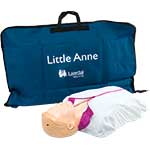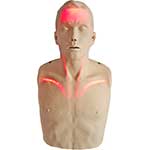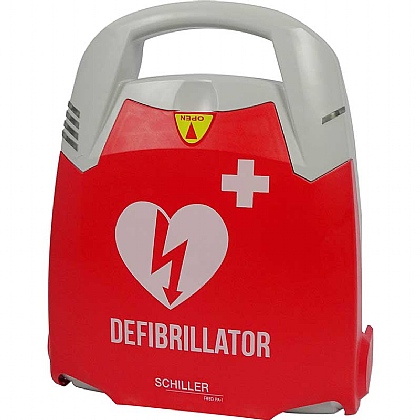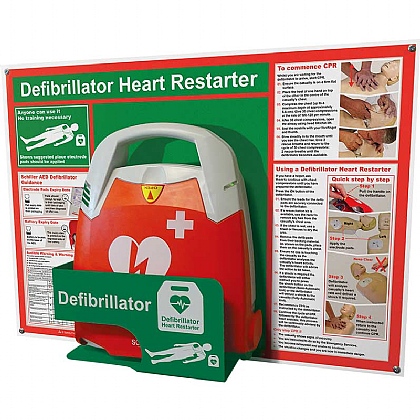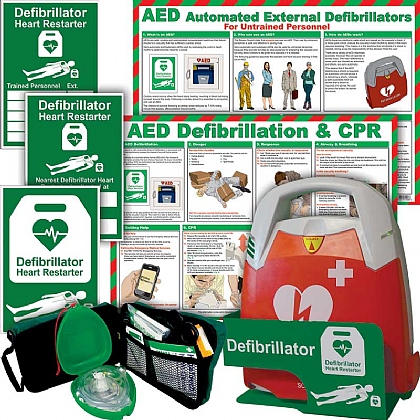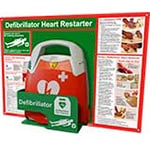
Cardiopulmonary Resuscitation is a lifesaving first aid technique that is utilised in emergency situations where a casualty’s heartbeat or breathing has stopped. Immediate CPR can double or even triple a casualty’s chances of surviving during cardiac arrest.
If you are in an emergency and are nervous about performing CPR correctly, keep in mind that it is better to try to do something than to do nothing at all. Keeping a casualty’s blood flow even partially active greatly increases the chance of a successful resuscitation by trained medical professionals after their arrival.
How to Perform CPR
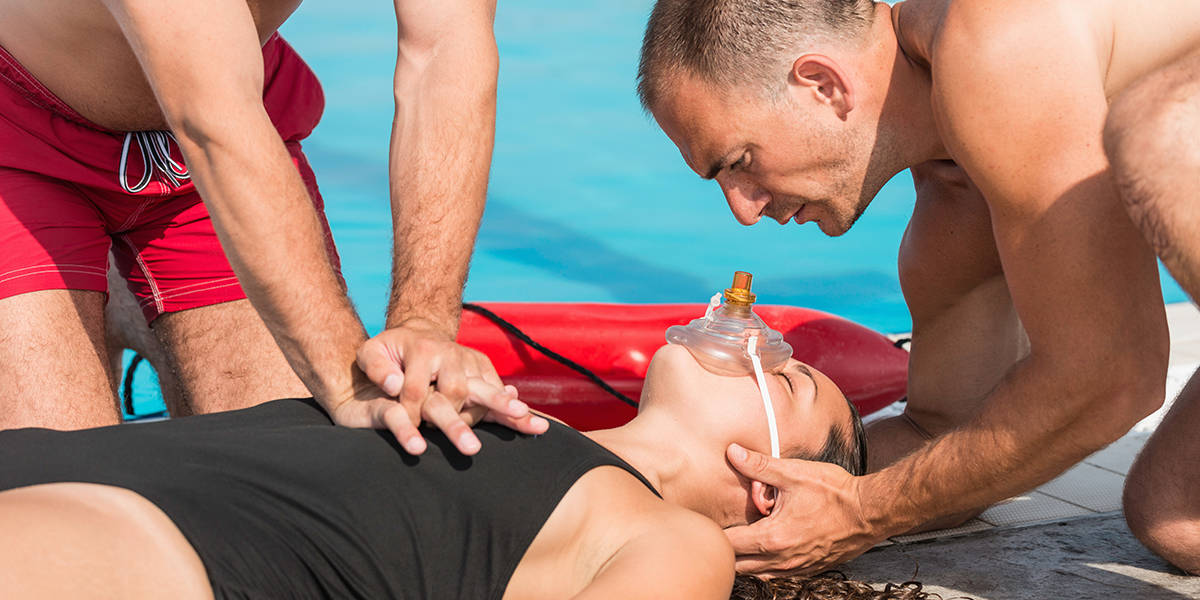
If someone is unconscious and not breathing normally, ask someone nearby to call 999 immediately and request an ambulance, then ask another person to find a public access defibrillator (PAD). If there’s no one else nearby, call 999 yourself then begin administering CPR.
If you call 999 yourself, you should be given basic life-saving instructions over the phone, including guidelines on how to perform CPR.
Performing CPR on adults

If you are trained to carry out CPR and are confident in your abilities, you should perform CPR with both chest compressions and rescue breaths. If you aren’t completely confident or not comfortable giving rescue breaths, attempt CPR with only chest compressions instead.
Compressions-only CPR:
- Kneel next to the casualty and put the heel of your hand on the breastbone in the middle of their chest. Place the palm of your other hand on top of the first and interlock your fingers.
- Straighten your arms and lean over the casualty so that your shoulders are directly above your hands.
- Press straight down on their chest using your body weight to a depth of about 5 to 6 centimetres (2 to 2.5 inches).
- Keeping your hands on the casualty’s chest, release the pressure, allowing the chest to return to its original position.
- Repeat compressions at a rate of between 100 and 120 times per minute.
CPR including rescue breaths:
Whenever rescue breaths are being delivered, particularly when the
casualty is a stranger, there is always some risk of cross infection. This risk is usually small, however, and is worth taking when you consider the inevitability that a person in cardiac arrest will die if no assistance is given.
CPR equipment like this Key Fob Face Shield can be used to decrease the risk of cross infection while administering rescue breaths.
- Kneel by the casualty and put the heel of your hand in the centre of their chest. Place the palm of your other hand on top and press straight down by 5 to 6 centimetres (2 to 2.5 inches) at a steady rate of between 100 and 120 compressions per minute.
Every 30 chest compressions, administer 2 rescue breaths: - Open the casualty’s airway by placing your hand on their forehead and gently tilting their head back, then carefully lifting their chin upward using the first two fingers of your other hand.
- Pinch their nose shut, then form a seal between their mouth and yours. Breathe gently into the casualty’s mouth for about 1 second. Check to see if the casualty’s chest rises as you administer rescue breaths.
- If the casualty’s chest doesn’t rise, attempt to open their airway again before administering more rescue breaths.
Continue cycling between 30 chest compressions and 2 rescue breaths until you stop performing CPR.
You should keep performing CPR until:
- An ambulance arrives and can take over from you
- The casualty begins to show signs of recovery and starts to breath normally
- A defibrillator is available and ready to use (If someone returns with a defibrillator, ask them to turn it on and follow the voice instructions while you continue to administer CPR)
- You are too exhausted to continue giving CPR (if there is another person present who can deliver CPR, alternate every minute with as little interruption to compressions as possible)
Performing CPR on a baby or child

Always perform CPR with rescue breaths on a baby or child as it is far more likely that a child will be experiencing airway problems than heart problems.
Children over 1 year old:
- Open the casualty’s airway by placing a hand on their forehead, gently tilting their head back and lifting their chin. Remove any visible obstructions blocking their mouth or nose.
- Pinch the casualty’s nose and make a seal between their mouth and yours. Blow steadily and firmly into their mouth, making sure you check that their chest rises. Administer 5 initial rescue breaths this way.
- Place the heel of your hand over the middle of the casualty’s chest and push down by 5cm (2 inches), approximately one third of the chest diameter. The depth of your chest compressions is paramount — if you can’t achieve a 5cm depth with one hand, then use two.
Administer chest compressions at a rate of 100 to 120 per minute. Every 30 chest compressions administer 2 rescue breaths. Continue that cycle until you stop performing CPR.
Babies under 1 year old:
- Open the casualty’s airway by placing a hand on their forehead, gently tilting their head back and lifting their chin. Remove any obstructions from their nose and mouth.
- Place your mouth over the casualty's nose and mouth. Blow steadily and firmly into their mouth, ensuring that their chest rises. Administer 5 initial rescue breaths this way.
- Place your first two fingers in the centre of the casualty's chest and push down firmly by about 4cm (1.5 inches) or approximately one-third of the chest diameter. Again, the depth of the compressions is important — if you can't achieve a depth of 4cm with your fingertips, then use the heel of one hand.
Administer chest compressions at a rate of 100 to 120 per minute. Every 30 chest compressions administer 2 rescue breaths. Continue that cycle until you stop performing CPR.
How do I know I'm performing chest compressions at the correct rate?
Chest compressions should be performed at a steady rate of 100 to 120 compressions every minute. The easiest way to get the right rhythm is to practice while singing a song that is between 100 and 120 beats per minute. A popular choice is “Stayin’ Alive” by the Bee Gees due to its popularity, but there are many songs with the right rhythm you can choose to help you remember!CPR Training and Equipment
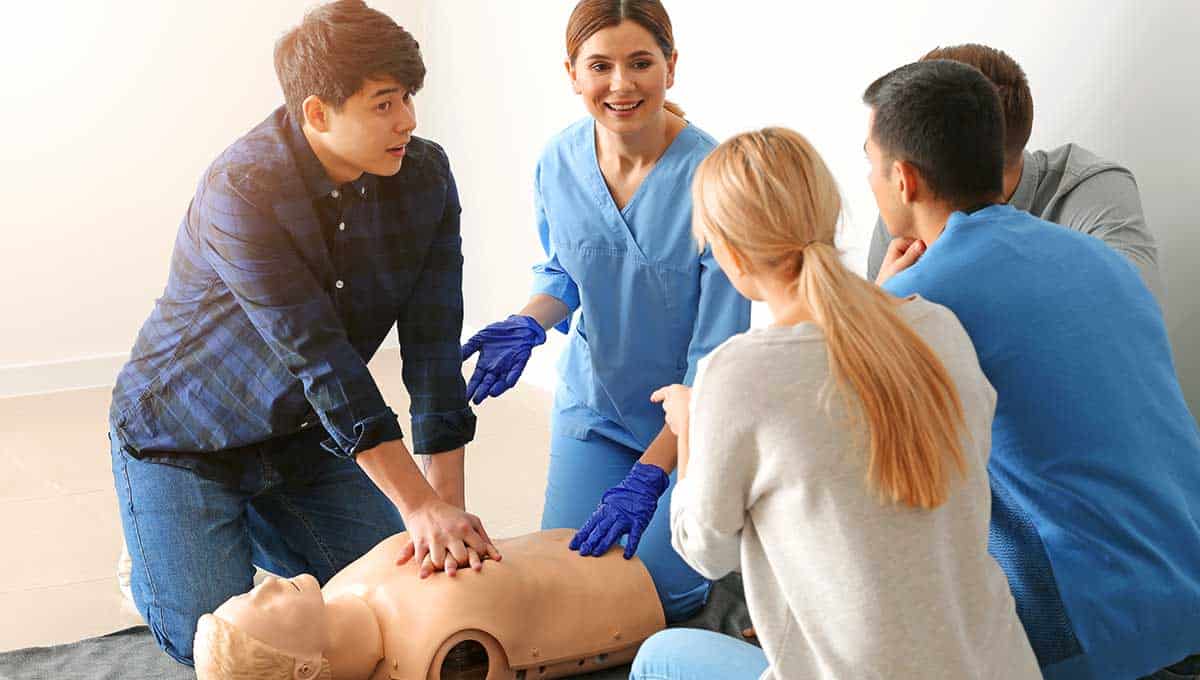
CPR and defibrillator training is available on its own or as part of a general first aid course. You can never predict when you’ll need to administer CPR to someone — knowing how to properly perform it could save a friend or loved-one’s life.
CPR Manikins
The best way to learn CPR is hands-on experience with high-quality CPR manikins. When you’re learning first aid techniques, your instructor should provide realistic CPR manikins that best mimic performing CPR on a real person.
Laerdal provides high quality manikins that will last many years with proper care. The Little Anne CPR manikin provides realistic simulation of airway obstruction and can be used to practice head tilts, chin lifts or jaw thrusts. On the inside of the manikin is a device that audibly clicks to confirm the correct compression depth. The manikin’s face can be removed and changed to maintain a hygienic training environment.
Brayden CPR Manikins are also a good choice for CPR practice, as they include
Laerdal CPR Manikins
Brayden Manikin
anatomical landmarks like the sternum, ribcage, sternal notch and xiphisternum. They also simulate airway opening with the head tilt and chin lift technique and realistic oral and nasal passages allow nose pinch practice. The Brayden Manikin also has audible feedback to indicate the correct chest compression depth.
Brayden manikins are also available in an LED-lit variation that demonstrates visually the flow of blood from the heart to the brain during CPR.
Defibrillators (sometimes referred to as defibs, AEDs or PADs) can usually be found in workplaces and public spaces like train stations, airports, and shopping or community centres. They’re designed to be used by anyone and will give clear voice instructions on how to attach the pads. The device automatically detects the heart’s rhythm and only tells you to deliver a shock when it is necessary — you can’t accidentally shock a casualty.
Brayden manikins are also available in an LED-lit variation that demonstrates visually the flow of blood from the heart to the brain during CPR.
Defibrillators
How to use a defibrillator:
- Press the green button on the defibrillator to switch it on, then follow the voice instructions.
- Peel off the sticky pads and attach them as shown in the diagram on the defibrillator — one pad on each side of the casualty’s chest.
- Once the pads are attached, stop administering CPR and don't touch the casualty. The defibrillator will automatically detect the casualty's heart rate.
- When the defibrillator detects that a shock needs to be administered, it will tell you to press the shock button. Automated defibrillators will deliver a shock without prompt. Do not touch the casualty while a shock is being delivered. The defibrillator will inform you when a shock is delivered and whether you need to continue to deliver CPR.
- Continue administering chest compressions until the defibrillator tells you to stop or the casualty shows signs of life.
Do you need equipment to perform CPR?
While CPR can be performed without any equipment, it is made safer and more effective through the use of resuscitation supplies. Some workplaces may be encouraged to carry CPR equipment based on their risk assessment.Takeaway
Close to 30,000 cardiac arrests happen outside of hospitals in the United Kingdom every year. Approximately 80% of these happen in the home, and only 10% of victims survive. CPR training is integral to ensuring that more people know what to do in the case of a cardiac arrest, giving people a much greater chance of survival.You should consider booking a general first aid training course or a CPR and defibrillator training course for yourself or your workplace; being prepared in the case of a cardiac arrest could likely be the difference in saving a life.
Interested in learning more about defibrillators? Read our blog to find out everything you need to you about automated external defibrillators.
Read our other blogs for more information on first aid, or contact us for further advice and information on our products.
About the author:
Jo Stokes is a writer, marketer and trained first aider at First Aid Online.
Find out more about Jo.
By Jo Stokes


